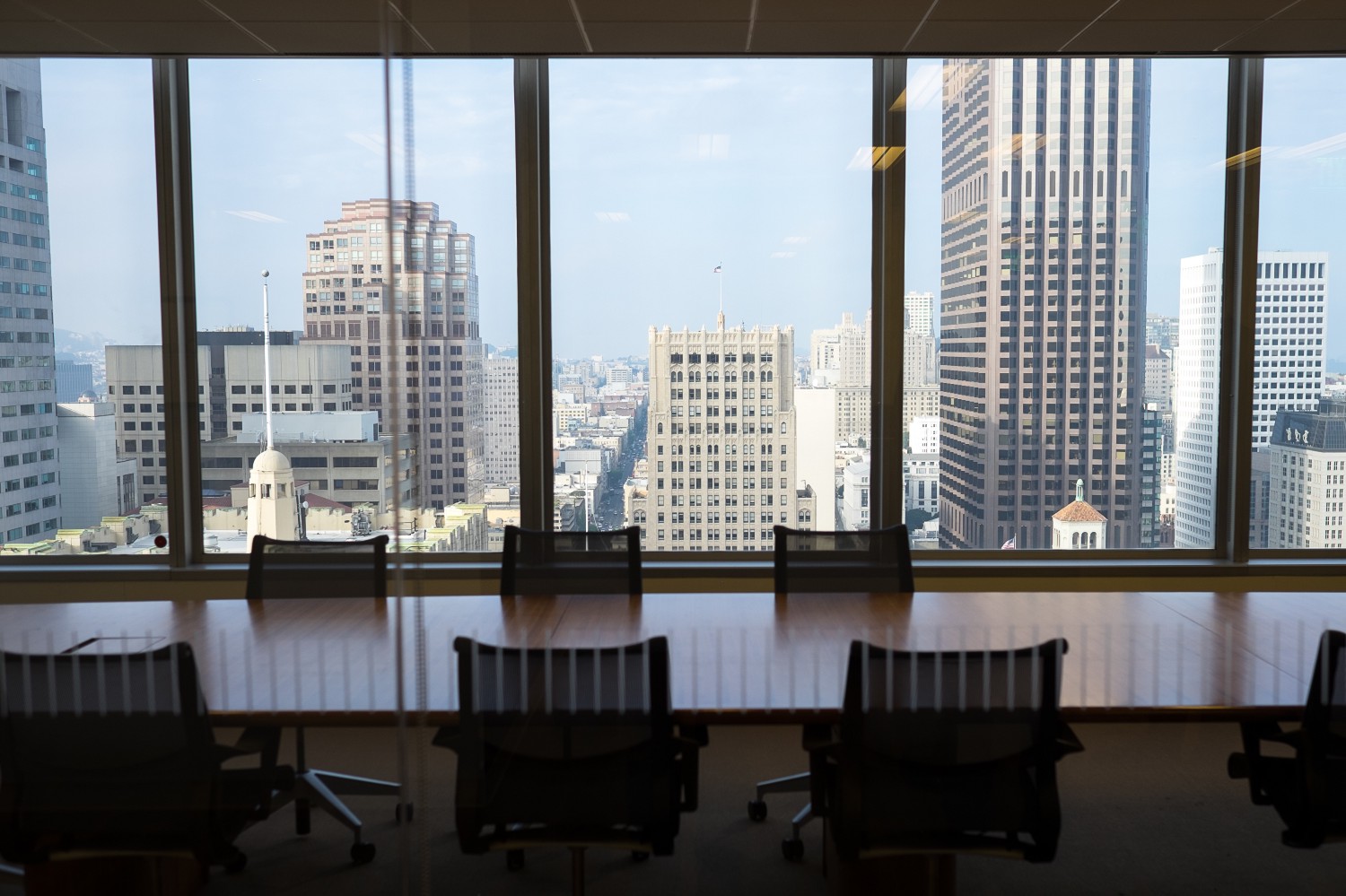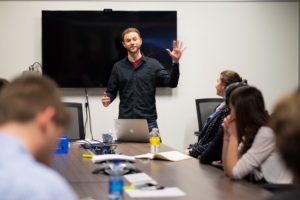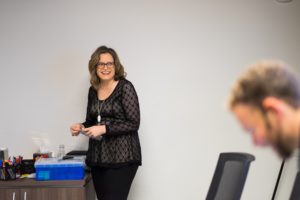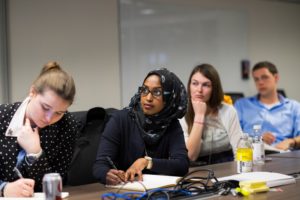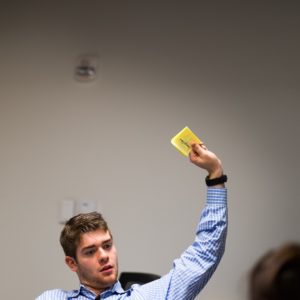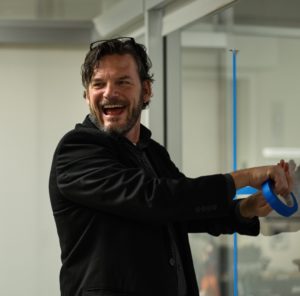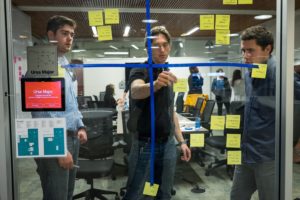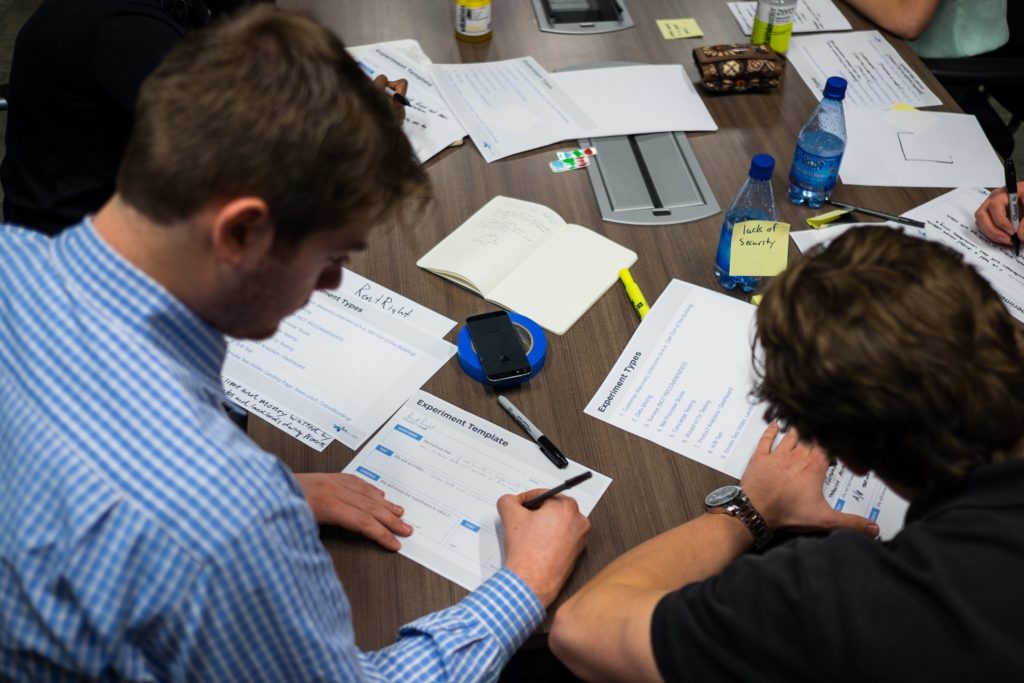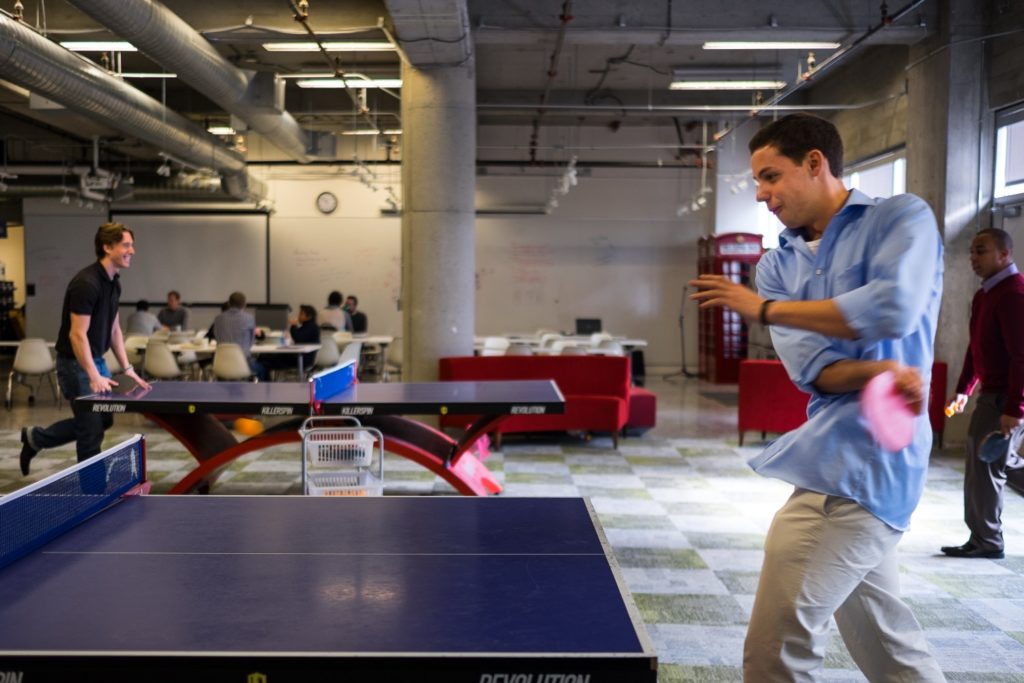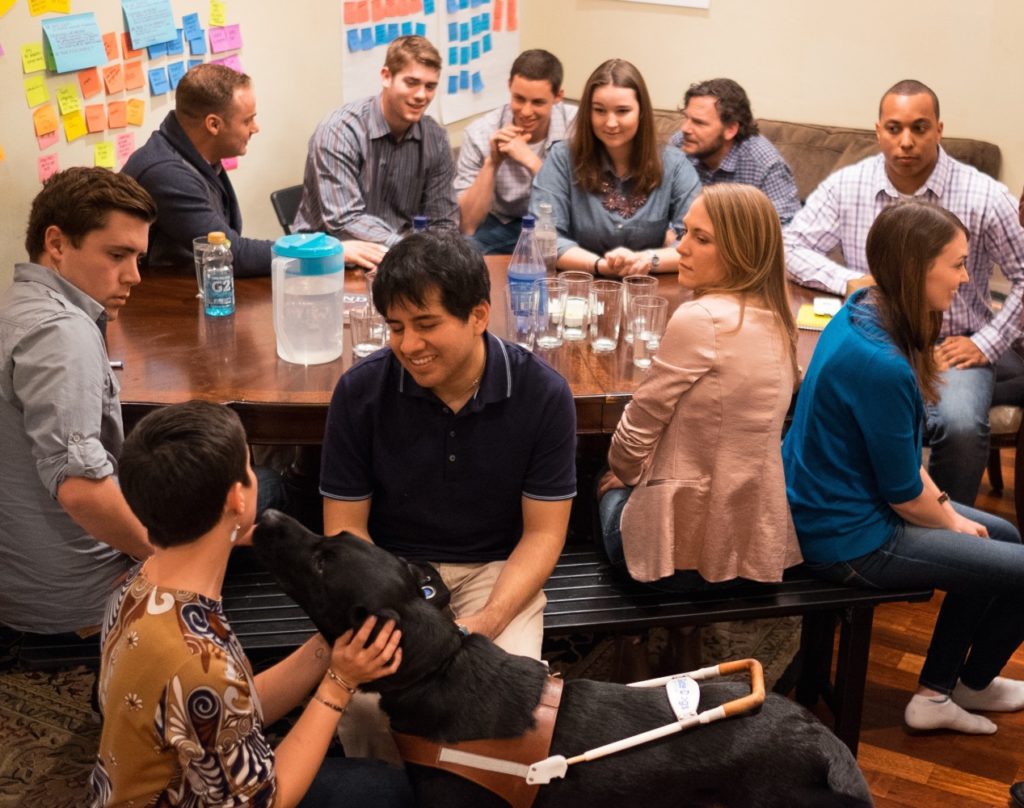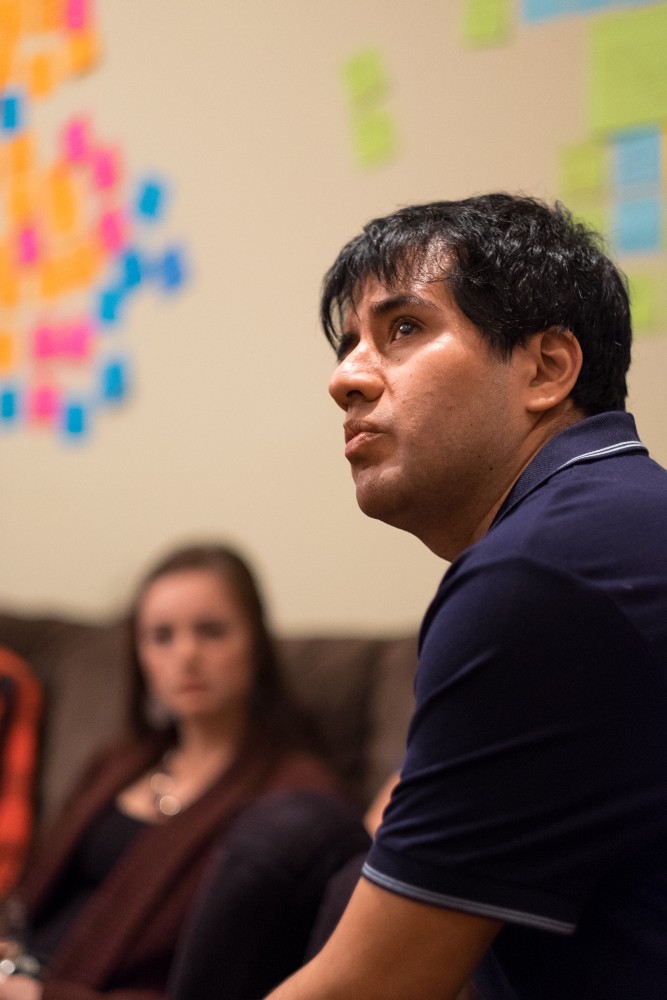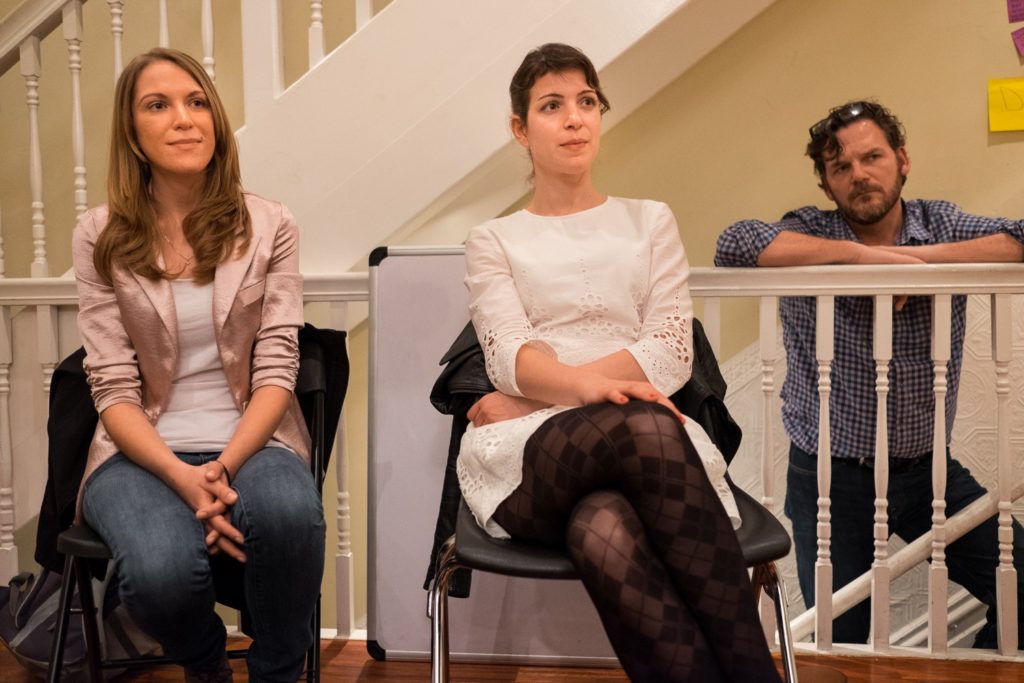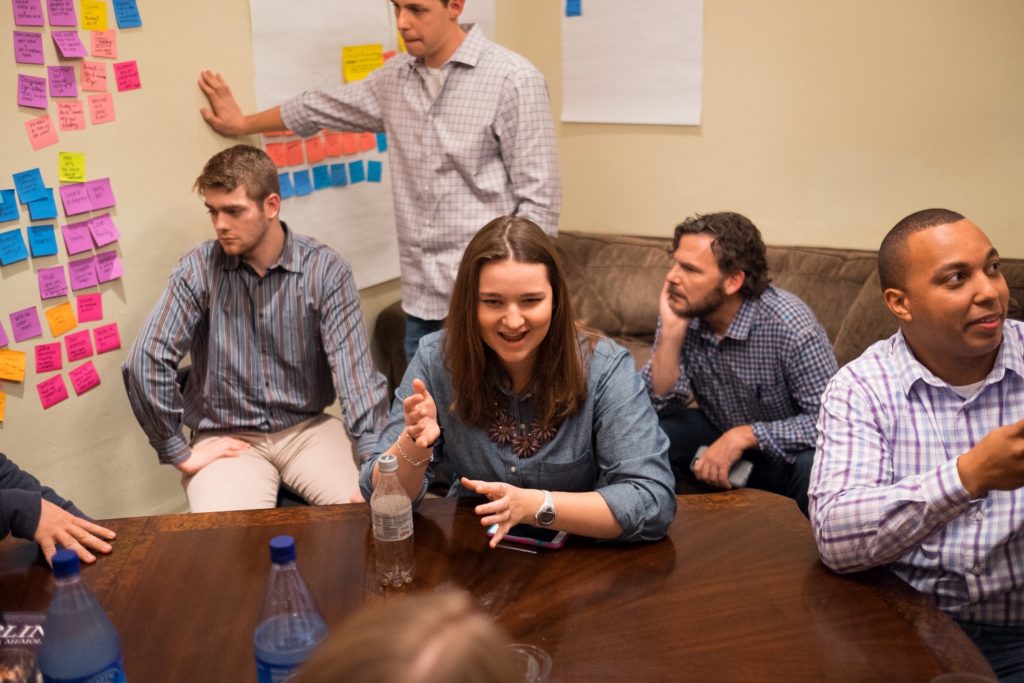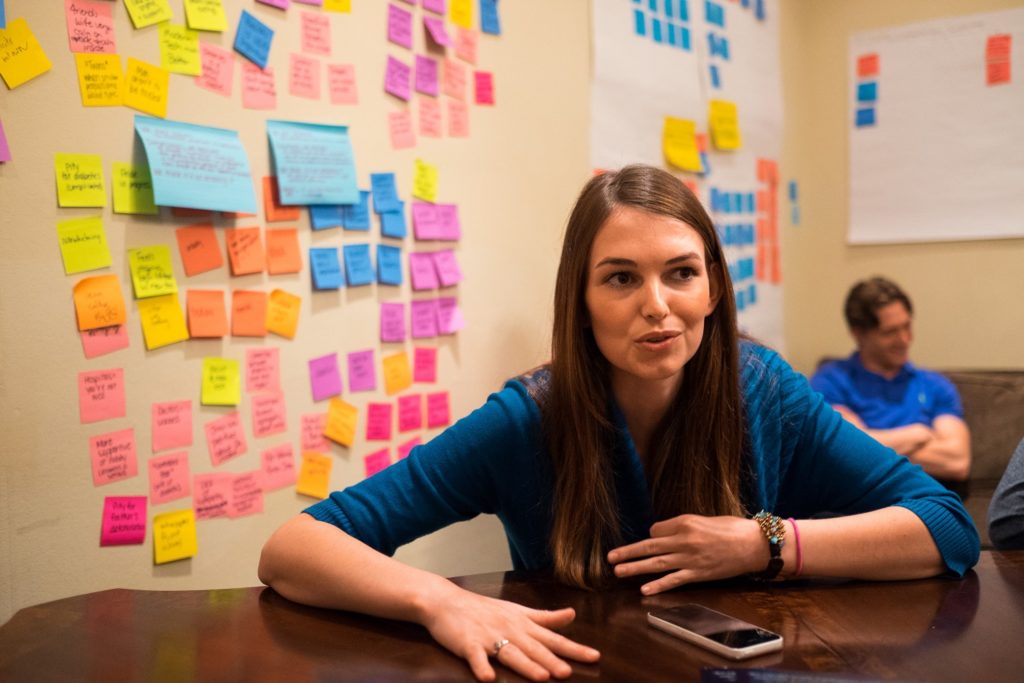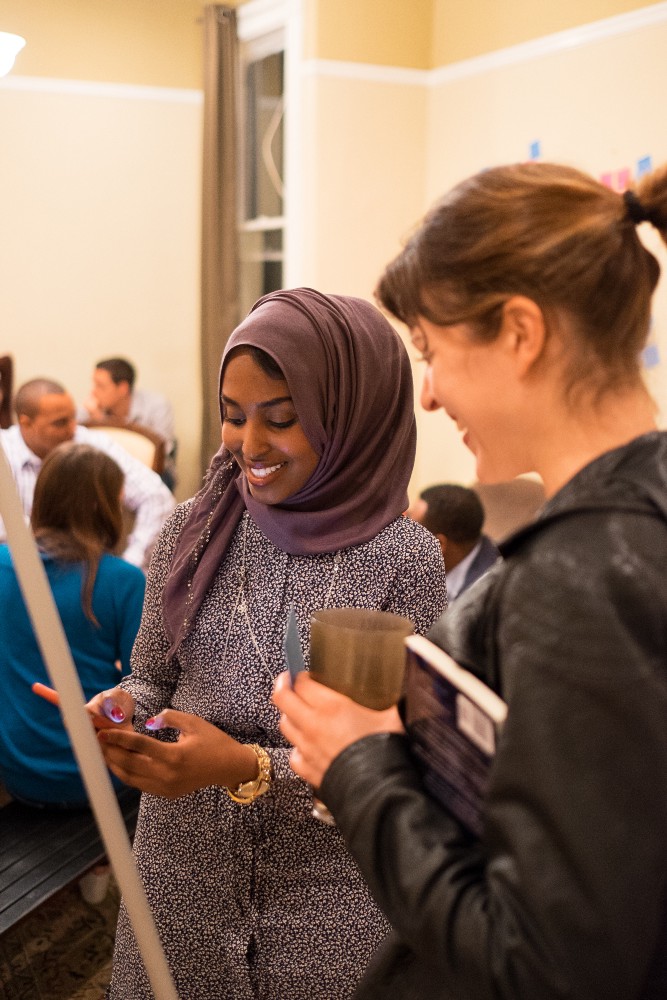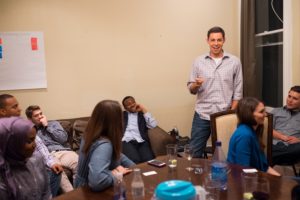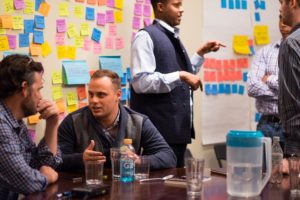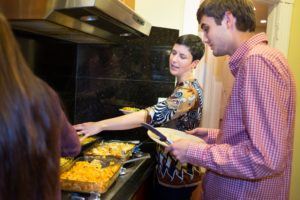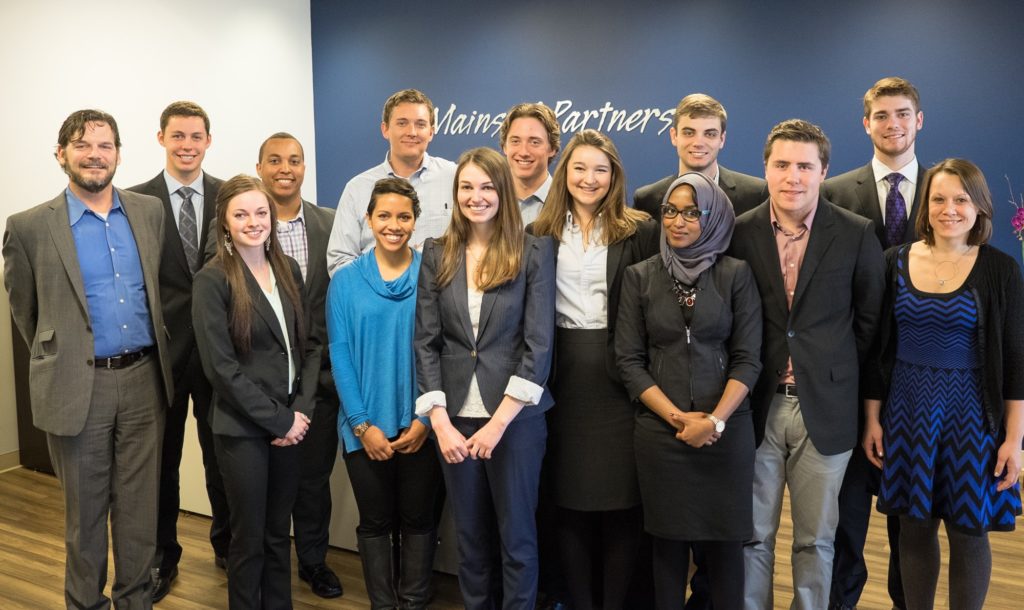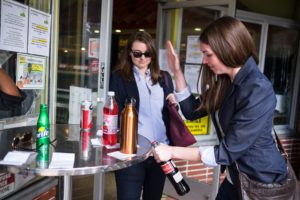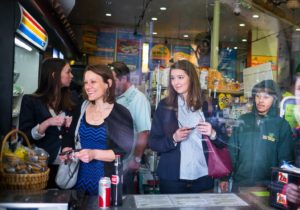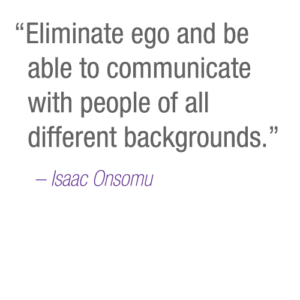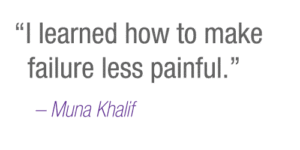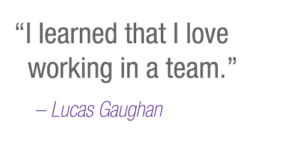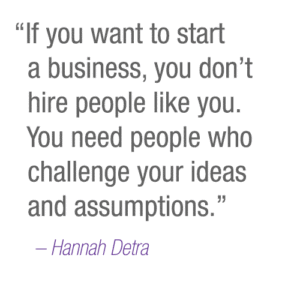What will 10 Midwest students take home from two weeks in the Valley?
The Schulze School of Entrepreneurship kicked off a new curriculum in January 2015: The Silicon Valley Immersion. For two weeks, 10 students lived in a huge Victorian house near Golden Gate Park and visited Bay Area leaders, including IDEO, Pivotal Labs, LinkedIn and Plantronics. This is a view of just two of their days, shot through the lens of Job Portraits, a Bay-area business that documents startup culture in the Bay Area.
[Read student blog posts from throughout their trip.]
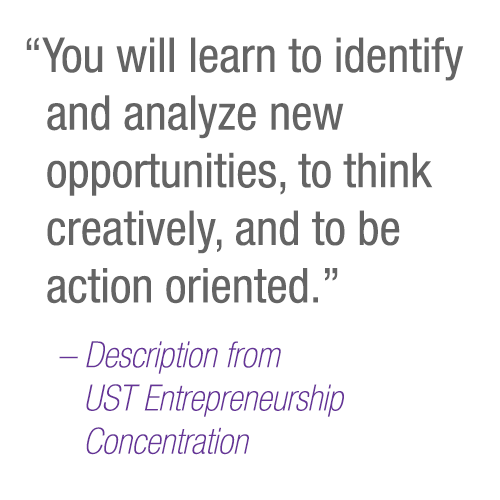
Get Focused
We joined the Tommies for a day-long design thinking workshop facilitated by Nic Werner and Janice Fraser at Pivotal Labs in San Francisco. Pivotal is an agile software development consulting firm at the vanguard of design thinking and pair programming.
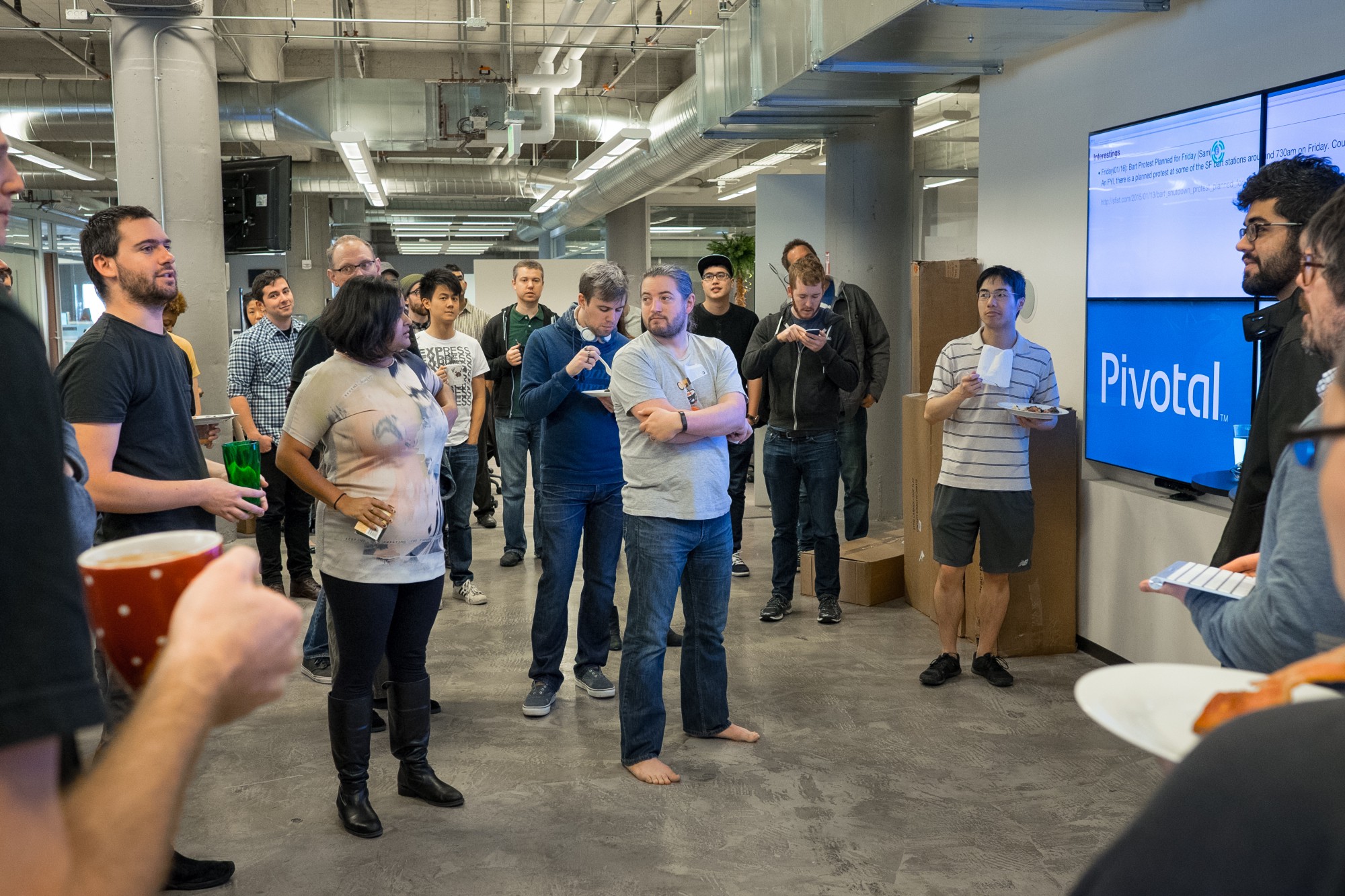
The students started the day by joining Pivotal for breakfast and its 9:06 a.m. standup. In response to a student’s question about the standup’s precise start time, Nic explained, “We experimented with different start times; 9:05 was just too early and 9:10 was too late.”
As the workshop started, Janice explained that Nic would take the lead for the day even though she originally developed the curriculum (and presented it the previous week at the White House).
“I’m learning to be quiet.” –Janice
“I’m learning to ask for help.” –Nic
Since the students started the week with an empathy exercise, interviewing people on the street to understand a problem they could help solve, they used the workshop to test some initial assumptions. Nic began by having everyone (including Alec and Nicole) write down 10 assumptions that threatened their budding “startup.”
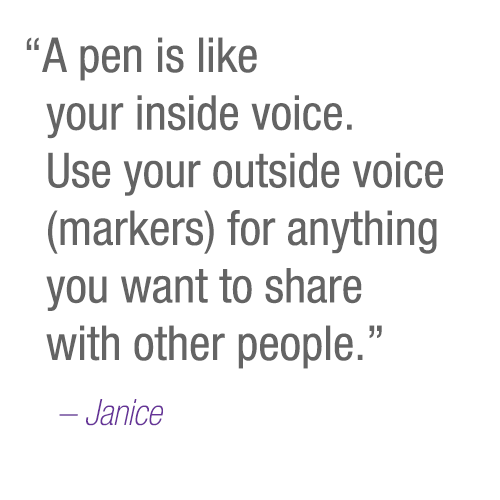
Once they’d recorded their assumptions, the students were asked to choose the five that posed the biggest threats to their products and hold them high in their right hand. The others were passed to the person to their left, who was then told to tear them up.
Next, each team created a 2x2 grid on a wall in blue tape, labeling the vertical axis more risky to less risky, and the horizontal axis from more confidence to less confidence (that the assumption is true). Then each team member’s sticky notes were distributed among the four quadrants.
Finally, students were told to remove anything in the bottom two quadrants (less risky) and arrange the remaining assumptions in a vertical column from highest priority to lowest. For the rest of the workshop, teams worked only with their top assumption.
“We started with 120 ideas in the room. Now there are just four,” Janice pointed out.
With their top assumption established, the teams set to work devising experiments to test it, including techniques such as data mining, smoke tests and A/B testing. Surveys were also an option, but Janice dismissed them as a last resort. “People are terrible at telling you what they will actually do,” she explained.
Finally the teams combined the best of each member’s experiments into tests with a set amount of time — two days, two weeks or two months. Then each team shared their plans while Nic and Janice provided feedback:
• If you’re planning to get sign-ups for a minimum viable product, give yourself a goal number. The simple act of guessing means you are more likely to be surprised, and more likely to pay attention to the results.
• In response to several groups planning a gamut of different experiment techniques: Pick just one to execute and learn from it before moving on to the next.
• When doing user interviews, avoid direct questions such as, “Would you like a feature that did X?” Instead, illicit information through storytelling. For example: “When was the last time you did X? What was good about it? What was hard?”
The day wrapped up with a “fishbowl,” where three students at a time were invited to answer the question, “What surprised you?” about the workshop.
“I realized certain things I thought were important actually aren’t.” –Muna
“We thought we would keep working on the same problem and change how we solved it. Now I see we actually need to change the problem.” –Bobby
“There’s a lot to do before you build the actual product.” –Hannah
“Solving one problem can cause other problems.” –Lucas
“We got stuck and then were forced to come up with individual solutions. When we got back together, we weren’t stuck anymore.” –Mike
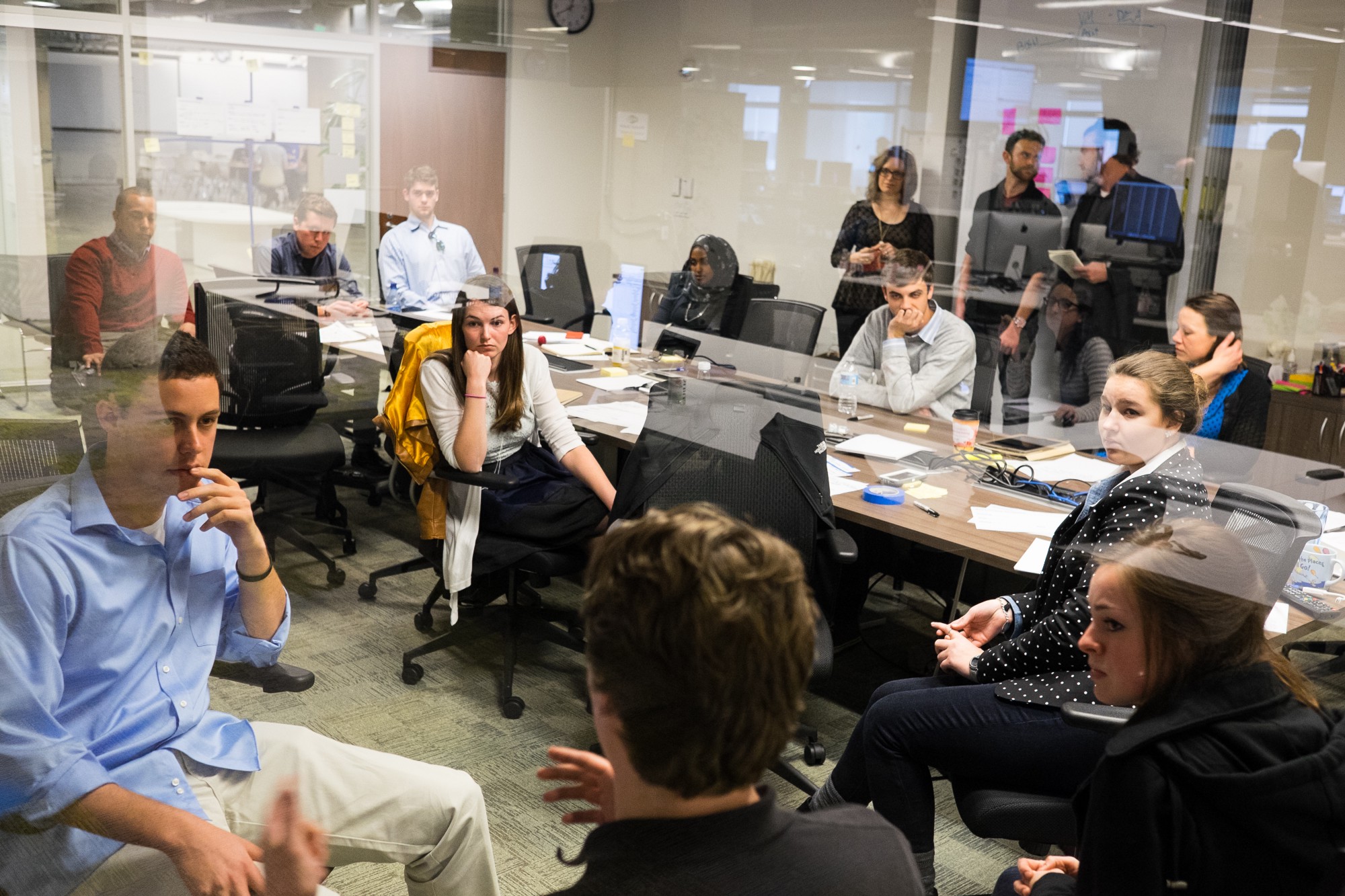
Get Noticed
To help clarify the nuances of Bay Area work culture, we hosted a discussion between three colleagues with recruiting ties (below). After hearing from our special guests and sharing a home-cooked dinner, the students brainstormed questions to ask during potential interviews.
Joining the students at dinner were Kamal Mohamed '12, LJ Stead '11 and Eric Ploeger '11, who recently relocated this company, Juice Bot, to the Bay Area.
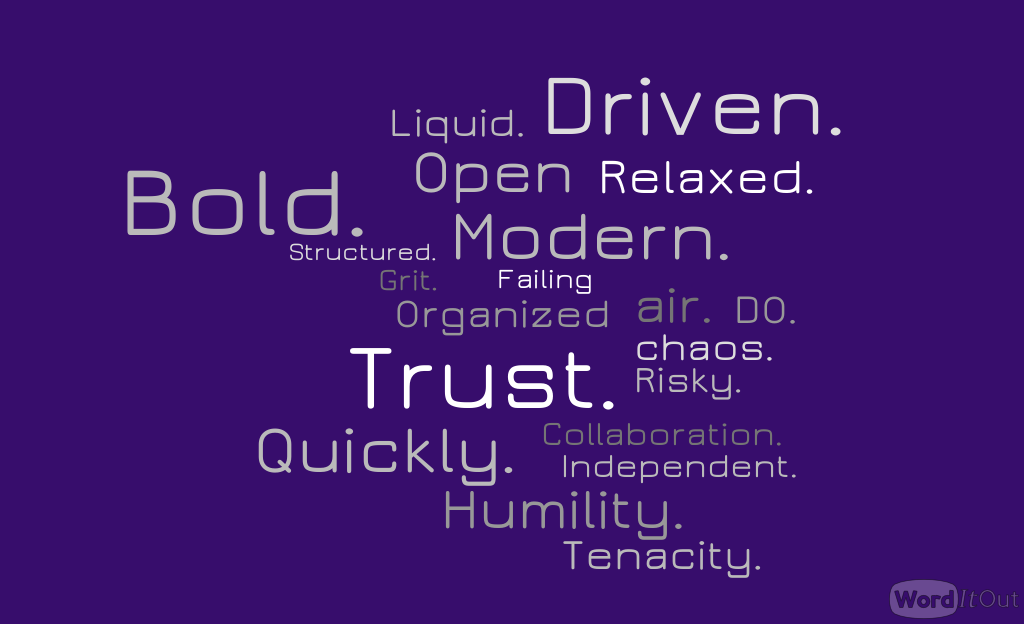
Words students suggested to describe work culture in the Bay Area
Tips from startup team builders
Belo
- Never put anyone down, even if you were unhappy at your previous job.
- Stand out. Avoid “cookie-cutter answers” in interviews and resumes.
- Show, don’t tell. Instead of “I’m hard-working and ambitious,” give a specific example of a project you started and led to success.
Lexi
- Look for jobs that fit in your “bucket” (what topics/areas you’re interested in) as well as teams you’d like to work with.
- During an interview, ask for things you can follow up about, like books you should read.
Talia
- Recognize what you don’t know and hire people who know more than you do.
- As companies get bigger, success becomes more complicated to define.
After dinner, we asked the students to pitch themselves to a potential employer in three sentences (extra credit if it took the form of a haiku). “Why three sentences?” everyone wanted to know. Besides forcing clarity, brevity is the favored currency in Silicon Valley, we told them, where the elevator pitch is alive and well.
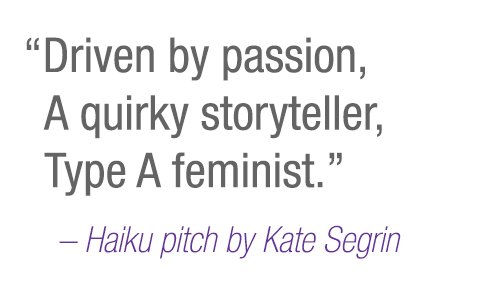
Get Funded
A trip to San Francisco wouldn’t be complete without pitching a potential investor. Ryan Kruizenga '04, an alumnus of the Schulze School of Entrepreneurship and vice president at Mainsail Partners, graciously fielded pitches from the entrepreneurs-in-training, along with Mainsail associate Nicole Naidoo.
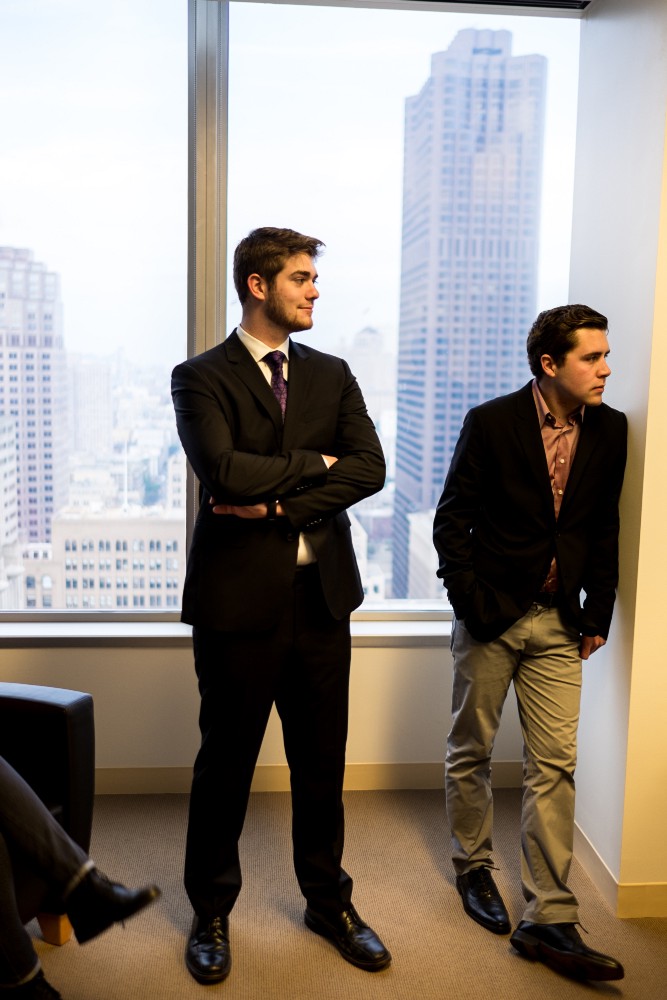
Connor and Bobby
Course-planning software for colleges that helps students graduate on time.
Feedback
- The clear market focus is good. “What we look for are products that are identifying a very particular niche.”
- Probably a $5–$20 million company, which is too small for most VCs.
- Is this truly a platform or just a feature? Possible acquisition of the feature by a company such as Blackboard. Check with them about programming language if you want to be set up for acquisition.

Kara and Kate
A story-focused app to help create a support network for diabetics.
Feedback
- Could be difficult to get people to produce enough content. Possible to have professional writers pair with diabetics to shape their stories.
- Biggest question (and riskiest assumption) is whether people will be comfortable sharing personal health information publicly
- “This is one where I would spend very little time developing the actual product.” Use existing tools to test if people actually want to share their health concerns publicly.

Justin, Lucas and Mike
Reverse apartment hunting where landlords search tenant profiles.
Feedback
- Since landlords with great units aren’t hurting for tenants, worry there would only be bad properties on the platform: the “monster.com effect”
- Think about moving up-market with high-touch rental specialists. Maybe this is a tool for rental brokers to make their job more efficient.
- “Go very very small.” One Mainsail portfolio company, PayLease, just adds a button to a landlord’s website to allow online rent payments.

Muna, Hannah and Isaac
A content platform for “in the know” travel information.
Feedback
- You can distill your likelihood to succeed to one question: How much content do you have? If it’s less than TripAdvisor, why would anyone come to you?
- What do you want your day to be like running this company? Do you want to constantly be stressed about publishing new content?
- User-generated content is the most economical, but the trend is moving toward curation. How can you turn the noise into helpful suggestions?
Get Culture
Of course, the Bay Area is home to countless cultural treats beyond Silicon Valley, and students used their free time to explore many of them. We even introduced a few Tommies to our favorite Mission taqueria (below).
After two weeks immersed in Silicon Valley startups, we wondered if the students were interested in coming back to the Bay Area after graduation. A few said yes, definitely. Others were deterred by the high costs. “I can run my business anywhere, so I’m looking for a low cost of living,” explained Connor Koerbitz, who has a successful online retail business.
Most students, however, were eager to take what they’d learned back to the startup scene in Minnesota. “I would bring back the commitment to start small and fail early,” said Mike Schmitt. “In Minnesota, everyone is still trying to build everything perfectly.”
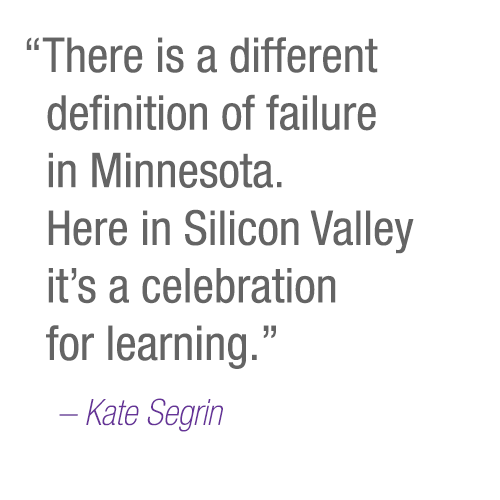
Kara Gamelin also pointed out that the Midwest fostered a different kind of entrepreneurship: “It’s more about viable businesses [instead of] something to change the world, or sexy products.” And the Midwest startup scene has it’s own benefits too. “It’s a smaller group of entrepreneurs, so people are eager to connect,” Connor said.
Parting Thoughts
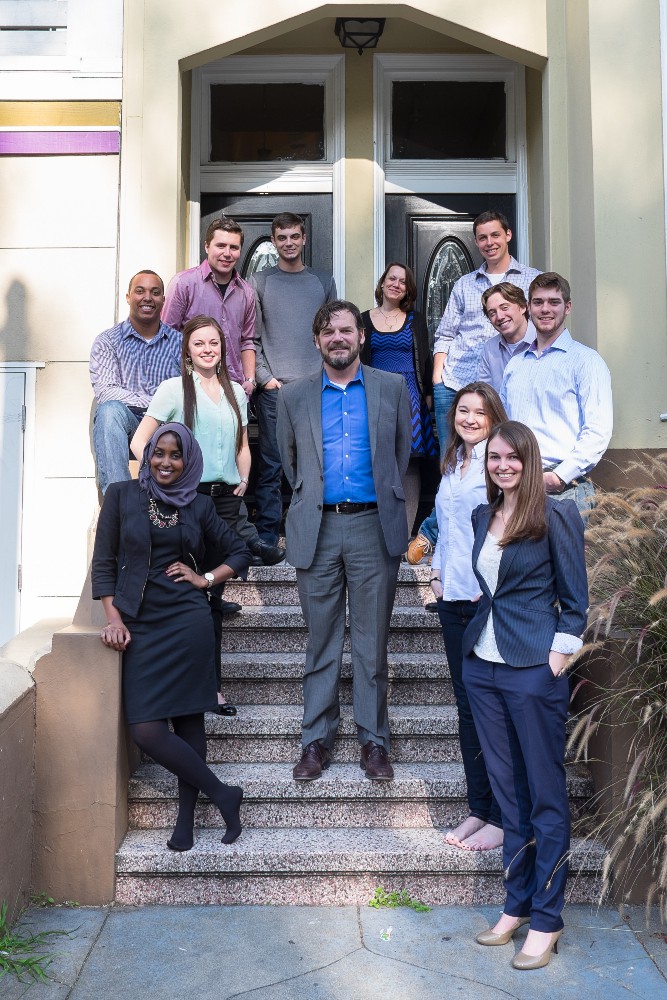
“Learning doesn’t happen until you are challenged and stretched. You’ve been stretched here. I watched you go through a high, then feeling uncomfortable and lost, then finding your way to an ‘aha’ moment. You seldom get that in a single course. I’ve taught for 20 years and I’ve never witnessed such rapid maturing and growth in critical thinking and problem solving. I am thrilled about what I have witnessed.” –Alec Johnson
